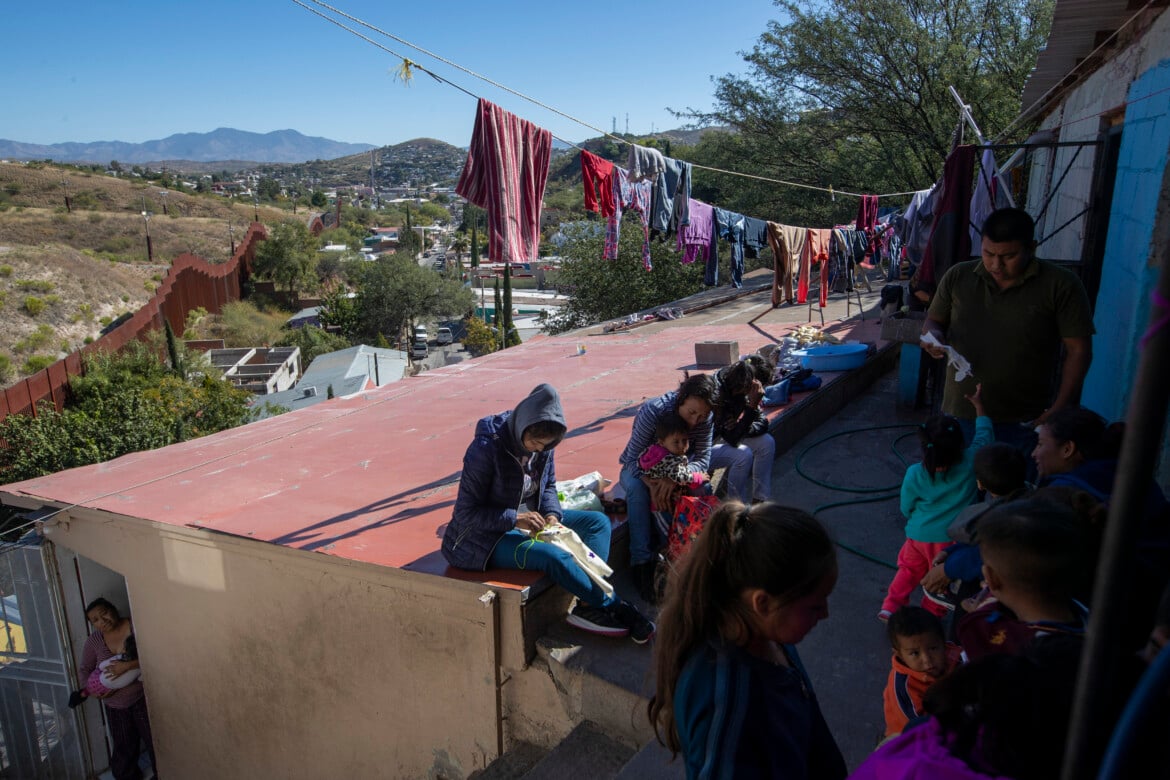Reportage
The good Samaritans risking arrest to help migrants in the Sonoran Desert
Sometimes armed paramilitary militias operate in sourthern Arizona, and to date dozens of migrant bodies found in the desert show blunt-force trauma consistent with beatings or sexual assault.

The Sonoran Desert stretches roughly one hundred kilometers between Tucson, Arizona, and the Mexican border and is among the hottest places in the United States. In summer the barren, hilly expanse – cacti and thorny scrub as far as the eye can see – reaches 50 degrees Celsius on July’s hottest days.
And today, the desert is also a flat strewn with bodies.
According to Tucson-based Humane Borders, which is working to “build a more humane border,” nearly 4,500 migrants have been found dead over the past 15 years. Trying to cross, they lost their way and died from dehydration or prolonged exposure that triggers hyperthermia and, all too often, heart failure even in very young people. The bodies recovered are only a small fraction of those still lying in the desert, perhaps along less-travelled, little-known trails.
Among the organizations that help migrants on this arduous crossing are the Tucson Samaritans. The group takes its name from the Good Samaritan in Luke’s Gospel; yet – even though the initiative grew around the local Presbyterian church – the Samaritans are not a faith-based organization.
“We’re open to anyone who wants to lend a hand,” member Alban Rosen tells il manifesto. “Recent volunteers have included people with no religious affiliation, plus a woman rabbi from Connecticut and a Baptist minister from Iowa.”
The main activity is to head into the desert in teams of four or five, find the paths migrants are following, and leave along those routes small caches of non-perishable food, water, clothing and anything else that might help people orient themselves in the wasteland.
The association has a hard core of long-time activists – like Rosen himself, now 86, who mainly handles public outreach. Still, short-term volunteers are warmly welcomed. “People can take part in just one outing,” Rosen explains. “Go to the website, check the list of dates, sign up and you’re immediately placed on a team.”
Many contribute their know-how: a University of Arizona geology professor has mapped the terrain, making navigation along migrant routes easier; another emblematic case is Larry, a former Marine who used his experience from Afghanistan and Iraq to help volunteers read human tracks in the desert and pinpoint the best places to leave supplies for migrants.
The work done by this group and others – No More Deaths/No Más Muertes and Green Valley Samaritans – is perfectly legal, yet clashes with law enforcement are frequent. Even before Donald Trump took office there were countless abuses against migrants and activists: in February 2024 more than 400 migrants were abandoned at the border without water or blankets, in a place where desert nights bring snow and temperatures near freezing. Volunteers from several associations gave first aid and drove the people – who wanted to file lawful asylum claims – to the nearest Border Patrol station. Once there, many volunteers were arrested for supposedly aiding illegal immigration, and more than 250 migrants had to spend the night outdoors.
“The real border militarization started under Clinton in the ‘90s,” Rosen notes, “and the situation got steadily worse as Homeland Security grew after the 9/11 attacks.”
Nevertheless, “today we’re facing a quantum leap,” he says. On January 20, 2025, the new Trump administration suspended the right to request asylum at the southern border, with the rhetoric of an “invasion” from Mexico.
“As long as the asylum system was working, things were tough, but we had fewer troubles with the Border Patrol,” Rosen recalls. “Many agents grew up in Tucson, have known our volunteers for years and understand that our work is humanitarian work, so they didn’t give us too much trouble.”
The situation now is very different. Border agents often patrol alongside officers from Immigration and Customs Enforcement – the notorious ICE, which answers directly to Trump and is leading raids against undocumented immigrants, and to which Border Patrol is subordinate. Sometimes armed paramilitary militias operate as well, and to date dozens of migrant bodies found in the desert show blunt-force trauma consistent with beatings or sexual assault.
Volunteers, too, fall victim to government repression. About four months ago, a team of volunteers was heading for Sasabe, a town located in an area of the border with a gap in Trump’s wall, where it’s easier for migrants to cross. They had just left Tucson and were about 20 miles out, on a road where travel is perfectly legal. Suddenly they spotted a checkpoint with unmarked vehicles – standard ICE practice. The volunteers were stopped, ordered to come out of their car and lie face down on the ground. Some agents pointed assault rifles at their heads while others removed the supplies meant for migrants. A Border Patrol officer, recognizing several of the volunteers, tried to intercede. It took a good half-hour before everyone was allowed to leave.
“Sometimes people ask us why we do it, why we take such risks,” Rosen says. “There are so many difficulties, but this city is our home, and the Sonoran Desert is our backyard. We can’t turn our backs on it. And we’ve been around for more than 25 years despite everything – and that keeps faith in humanity alive.”
Originally published at https://ilmanifesto.it/buoni-samaritani-nel-deserto-di-sonora on 2025-07-23
